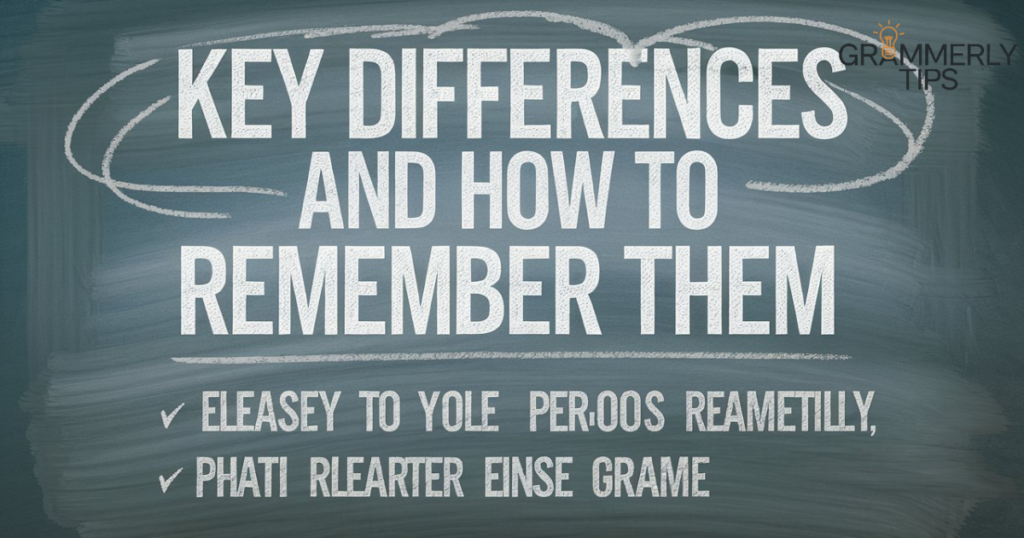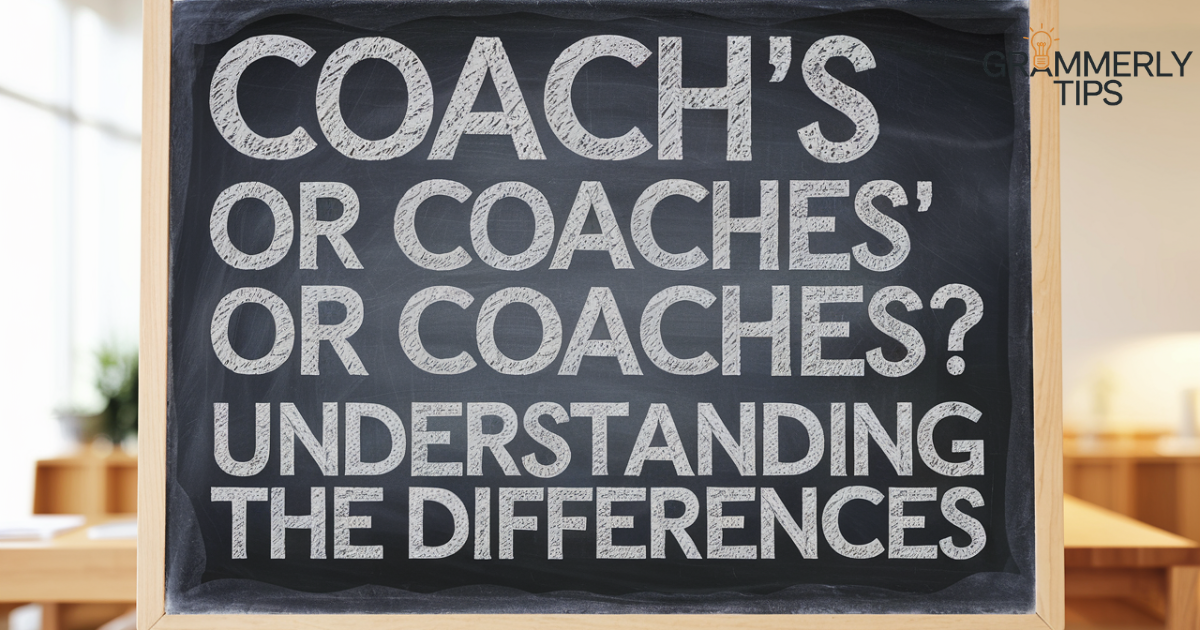English grammar can be tricky, especially when it comes to similar-looking words like coach’s or coaches’ or coaches. While they all originate from the word coach, their meanings and uses vary based on context. Understanding the differences can help you use them correctly in both written and spoken communication.
In this guide, we’ll break down each term, explain its specific usage, and provide examples to clarify. Whether you’re writing about a sports coach or referring to multiple coaches, you’ll master the distinction with ease.
Coach’s (Singular Possessive Form)

Coach’s is the singular possessive form, showing that something belongs to one coach. For example, “The coach’s whistle was loud” means the whistle belongs to the coach. Use this form when referring to a single coach owning or possessing something. It’s marked by adding an apostrophe and “s” to the word coach.
Scenario Example: Email
Subject: Coach’s New Training Programs
Dear Team,
I hope this email finds you well. I’m excited to share details about the coach’s new training programs, which are designed to enhance our team’s performance and focus on individual growth. These programs include innovative strategies tailored to improve both technical skills and teamwork.
The coach’s schedule has been updated to incorporate these sessions, with dedicated time slots for personalized feedback and development. Please ensure that you review the attached schedule and prepare accordingly for your allocated time.
If you have any questions or need further clarification, don’t hesitate to reach out. Let’s make the most of these opportunities to strengthen our abilities as a team.
Best regards,
[Your Name]
Explanation
The email emphasizes the coach’s efforts to introduce new training programs aimed at improving team performance and individual growth. It highlights the updated schedule and provides guidance on preparation for personalized sessions. The use of coach’s here shows possession, indicating the programs and schedule belong to the coach. This ensures clarity while maintaining a professional tone.
Coaches (Plural Form)
Coaches is the plural form of the word coach, referring to more than one coach. For example, “The coaches met to discuss the game plan” means multiple coaches are involved. This form is used when talking about a group or team of coaches without showing possession. It does not include an apostrophe.
Scenario Example: Team Meeting
During the team meeting, the coaches shared their strategies for the upcoming tournament. Each coach provided input on improving player skills and enhancing teamwork. The discussion highlighted how the coaches would divide responsibilities during training sessions. Their collaborative approach aimed to ensure every player received equal attention and support.
Explanation
In this example, coaches refers to multiple coaches working together during a team meeting. It highlights their collaboration to share strategies and responsibilities for training sessions. The term coaches here simply identifies the plural form, indicating a group without any ownership.
Click to Read: “Family’s or Families’ or Families? A Simple Guide”Coaches’ (Plural Possessive Form)
Coaches’ is the plural possessive form, showing that something belongs to multiple coaches. For example, “The coaches’ strategies were discussed in the meeting” means the strategies belong to the group of coaches. This form is created by adding an apostrophe after the plural noun coaches. Use it to indicate shared ownership among multiple coaches.
Scenario Example: Training Program Report
Title: Coaches’ Strategies for Player Development
The report outlines the coaches’ strategies for enhancing player development throughout the season. It details various techniques and drills that the coaches believe will improve individual skills and overall team dynamics. The coaches’ focus is on building strength, agility, and mental toughness in players. The report also highlights how these strategies will be implemented during the upcoming training sessions.
Explanation
In this example, coaches’ indicates the plural possessive form, showing that the strategies belong to multiple coaches. The title suggests a focus on the collective approach of the coaching team to improve player development. The apostrophe after “coaches” reflects the shared ownership of the strategies outlined in the report.
Key Differences and How to Remember Them

Coach’s (Singular Possessive Form)
Coach’s shows possession, indicating that something belongs to one coach. For example, “The coach’s whistle” means the whistle belongs to the coach. To remember, think of it as a singular item with an apostrophe + “s” added to the word coach.
Coaches (Plural Form)
Coaches is simply the plural form of coach, referring to more than one coach. For example, “The coaches are meeting tomorrow” means multiple coaches. To remember, just think of the word coach turned into its plural version by adding “es” at the end.
Coaches’ (Plural Possessive Form)
Coaches’ shows possession for multiple coaches. For example, “The coaches’ plan was effective” means the plan belongs to the group of coaches. To remember, think of it as a plural word (coaches) with an apostrophe after the “s” to show that the ownership is shared among all the coaches.
By focusing on whether you’re referring to one coach, many coaches, or the ownership of something by a group of coaches, you can easily determine which form to use.
Why It Matters in Professional Communication
Understanding the differences between coach’s, coaches, and coaches’ is crucial in professional communication, especially when clarity is key. Incorrect usage can lead to confusion or misinterpretation, especially in formal documents, reports, or emails. Proper grammar demonstrates attention to detail and professionalism, enhancing credibility. In team-oriented settings, such as sports or business, accurately conveying ownership and roles fosters effective collaboration. Ensuring correct usage reflects your communication skills and respect for language, ultimately improving your professional image.
Common Mistakes and How to Avoid Them
Misplacing the Apostrophe
Incorrect: The coaches’s strategies were successful.
Correct: The coaches’ strategies were successful.
In this case, the apostrophe is misplaced. The plural possessive form of coaches should have the apostrophe after the “s,” not before it.
Confusing Plural and Plural Possessive Forms
Incorrect: The coach’s are meeting today.
Correct: The coaches are meeting today.
The incorrect sentence uses the singular possessive form, coach’s, instead of the plural form coaches to refer to more than one coach.
Using the Singular Form When Referring to Multiple Coaches
Incorrect: The coach’s are discussing the game plan.
Correct: The coaches are discussing the game plan.
The singular possessive coach’s is incorrectly used when referring to multiple coaches. The correct plural form, coaches, should be used.
Practical Tips for Using Coach’s, Coaches’, and Coaches

Determine Ownership
Before deciding which form to use, ask yourself if you’re indicating possession. If something belongs to a single coach, use coach’s. For multiple coaches sharing ownership, use coaches’. If ownership isn’t involved, use coaches to simply refer to more than one coach.
Think About Quantity
Consider whether you are referring to one coach, multiple coaches, or a group of coaches. Use coach’s for one coach, coaches for more than one coach, and coaches’ when talking about something belonging to multiple coaches.
Use Examples to Clarify Your Meaning
If you’re unsure, use examples to make your meaning clear. For instance, “The coach’s notebook” shows one coach owns it, while “The coaches’ meeting” implies the meeting belongs to a group. Examples help ensure you’re using the correct form based on the context.
Examples to Clarify Each Form Further
Email Example: Using “Coach’s”
Subject: Coach’s Approach to Team Motivation
Dear Team,
I wanted to share the coach’s new approach to team motivation for the upcoming season. This strategy focuses on building individual confidence and improving team cohesion. We’ll discuss this in more detail at our next meeting, but feel free to reach out if you have any questions before then.
Best regards,
[Your Name]
In this example, coach’s shows possession, indicating that the approach to team motivation belongs to the coach.
Team Report Example: Using “Coaches”
The coaches reviewed the team’s performance over the past month and identified key areas for improvement. They emphasized the importance of consistent practice and effective communication. Each coach shared their insights on how to enhance individual player skills. The collective feedback will guide the team’s training approach moving forward.
Newsletter Example: Using “Coaches’”
In this month’s newsletter, we highlight the coaches’ new training techniques that have been implemented. Their strategies focus on improving both fitness and mental resilience. The coaches’ dedication to the team’s success has been inspiring. Be sure to attend the upcoming session to learn more about their approach.
Conclusion
In conclusion, understanding the differences between coach’s, coaches’, and coaches is essential for clear and effective communication. Whether you’re discussing something belonging to one coach, referring to a group of coaches, or indicating shared ownership, choosing the correct form ensures accuracy and professionalism. By thinking about possession and quantity, you can easily decide which form to use.
Remember to rely on examples to reinforce your understanding and clarify your meaning. Avoid common mistakes, such as misplacing apostrophes or confusing singular and plural forms. Mastering these distinctions will elevate your communication skills, especially in team-oriented or professional settings.

Grammerlytips.com, authored by Jame, offers expert tips and insights on mastering grammar, enhancing writing skills, and boosting communication effectiveness.

